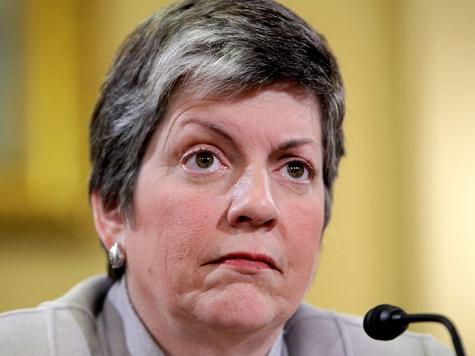
Two of the largest airports in the United States have contradicted claims from the federal government that the minor spending cuts of the Budget Control Act’s sequester have caused delays for passengers.
On Monday, Homeland Security Secretary Janet Napolitano said that airports in Los Angeles and Chicago are experiencing passenger delays at customs due to the recently enacted FY 2013 sequester budget reductions. Waiting lines, she added, are “150 to 200 percent as long as we would normally expect… Now that we are having to reduce or eliminate basically overtime both for TSA and for customs.”
The Telegraph, however, reported that officials at both airports said Secretary Napolitano’s statements about unusual delays were incorrect. According to the Telegraph, Marshall Lowe of the Los Angeles International Airport said, “we haven’t had any slowdowns at all,” and Karen Pride of the Chicago Department of Aviation said there were “no unusual delays or cancellations” at O’Hare Airport.
In a statement issued Monday, officials at Customs and Border Protection blamed delays at airports in Los Angeles and Chicago on “reduced primary booth staffing” caused by the sequester reductions in FY 2013 budget authority that went into effect on March 1, 2013. FY 2013 began five months ago on October 1, 2012, and will end on September 30, 2013.
Officials at the Transportation Security Administration joined the Homeland Security chorus, saying that “travelers can expect longer security checkpoint lines as the agency reduces overtimes and freezes hiring. TSA said in a statement that it expects to have about 1,000 vacancies by Memorial Day and as many as 2,600 by the end of the budget year in September,” according to a report at CNS.
Secretary Napolitano’s Monday statement, along with those from TSA and Customs and Border Protection continued the communications theme she first articulated in a February 13, 2013 letter to Congressman Bennie Thompson (D-MS). In that letter, Napolitano outlined nine purported dire consequences of the sequester upon Homeland Security, without displaying any comparative budget data between FY 2012 and FY 2013.
It is not clear if the sequester has actually reduced Homeland Security Department outlays, as compared to FY 2012. The Department’s actual outlays increased from $44.4 billion in FY 2010 to $45.7 billion in FY 2011. Congressional Budget Office Director Doug Elmensdorf said in a letter to Congressman Paul Ryan (R-WI) dated March 4, 2013 that the Homeland Security Department’s pre-sequester discretionary spending budget authority for FY 2013 was $58.386 billion, while its actual outlays for FY 2013 were budgeted to come in at $47.527 billion.
Earlier reports stated that both budget authority and outlays will be reduced by 3% for FY 2013 from pre-sequester plans. Based on those FY 2013 planned sequester reductions, actual discretionary Homeland Security outlays in FY 2013 would be $46.102 billion.
The difference between budget authority and outlays is simple. Outlays are what is actually spent in a fiscal year. Outlays may include expenditures that were authorized in a previous fiscal year. Likewise, some expenditures may be authorized for this fiscal year but not actually spent and included as outlays until the next fiscal year.
Actual spending by the federal government in FY 2012, which ended on September 30, 2012, totaled $3.538 trillion dollars. According to budget details contained in a letter Congressional Budget Office Director Doug Elmensdorf’s March 4, 2013 letter to Congressman Paul Ryan, actual spending by the federal government in FY 2013–even after the $85 billion in sequester reductions–will be $3.593 trillion, a one-year increase of some $55 billion.

COMMENTS
Please let us know if you're having issues with commenting.